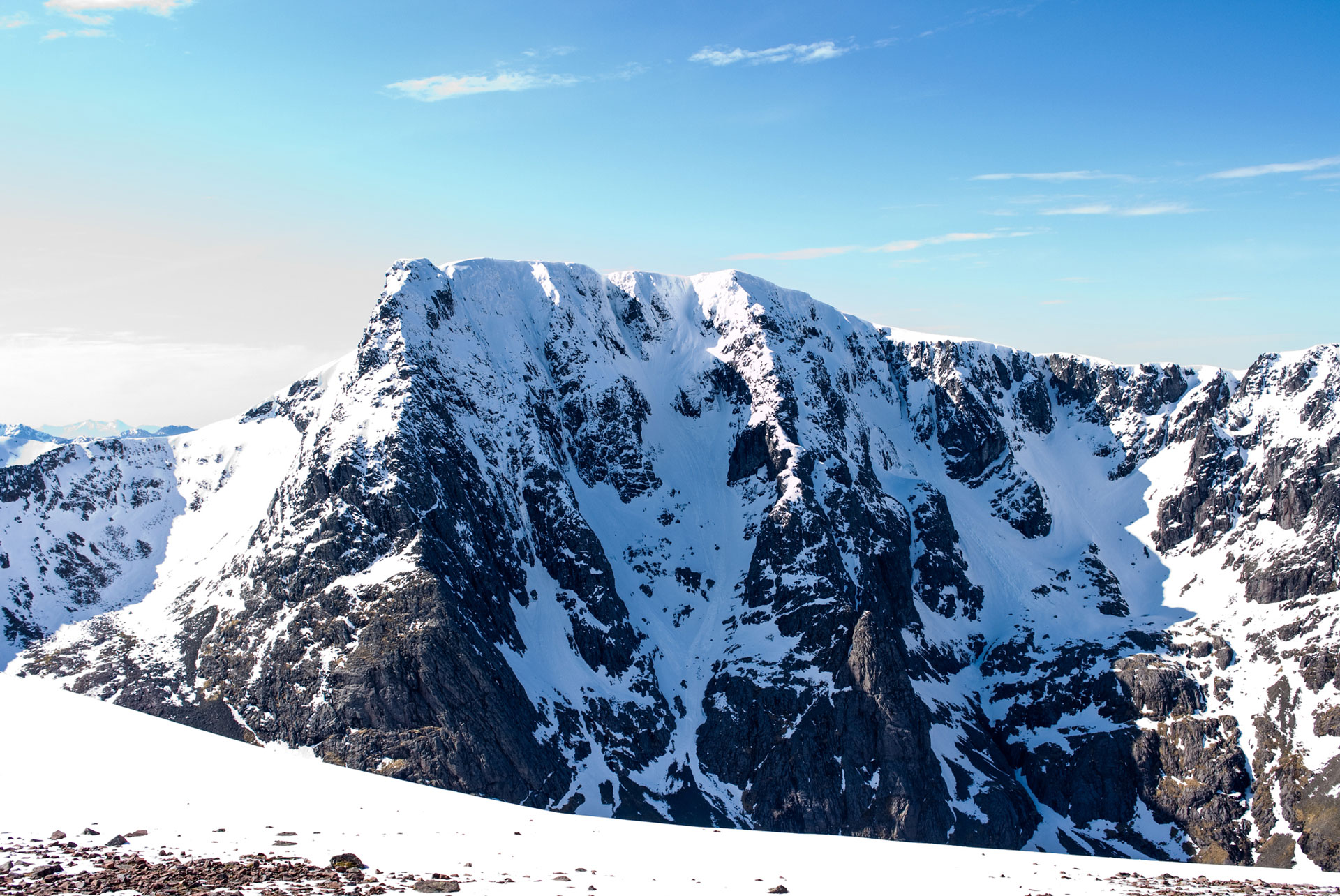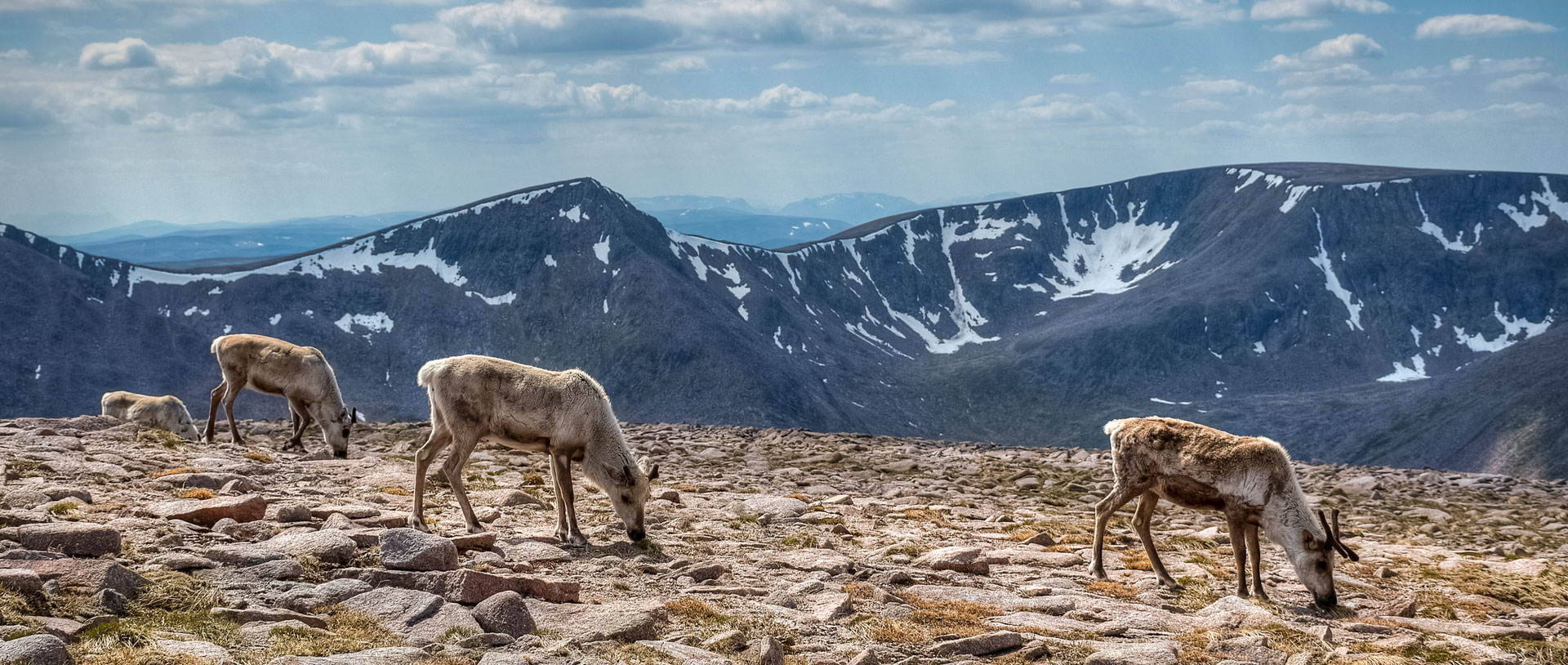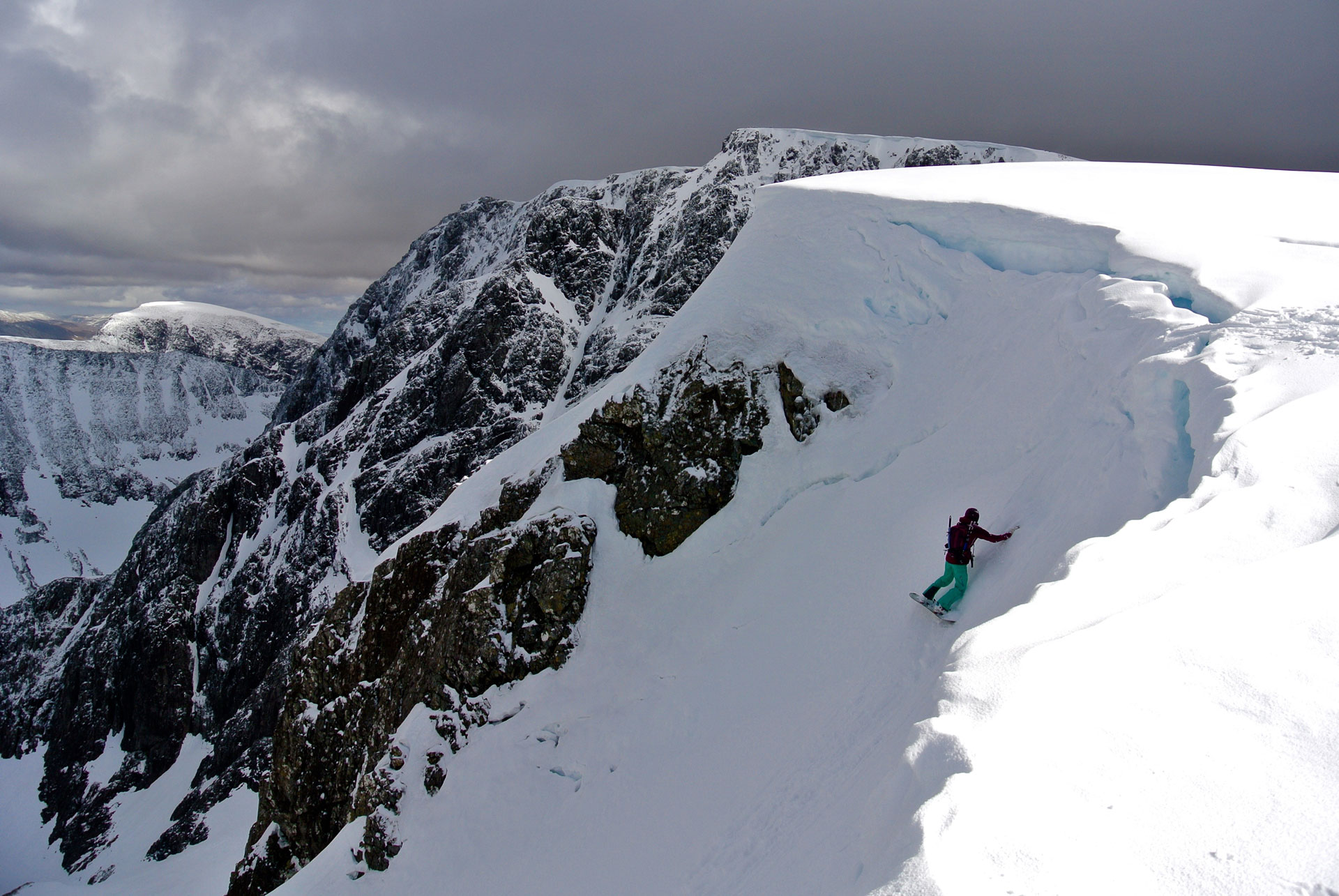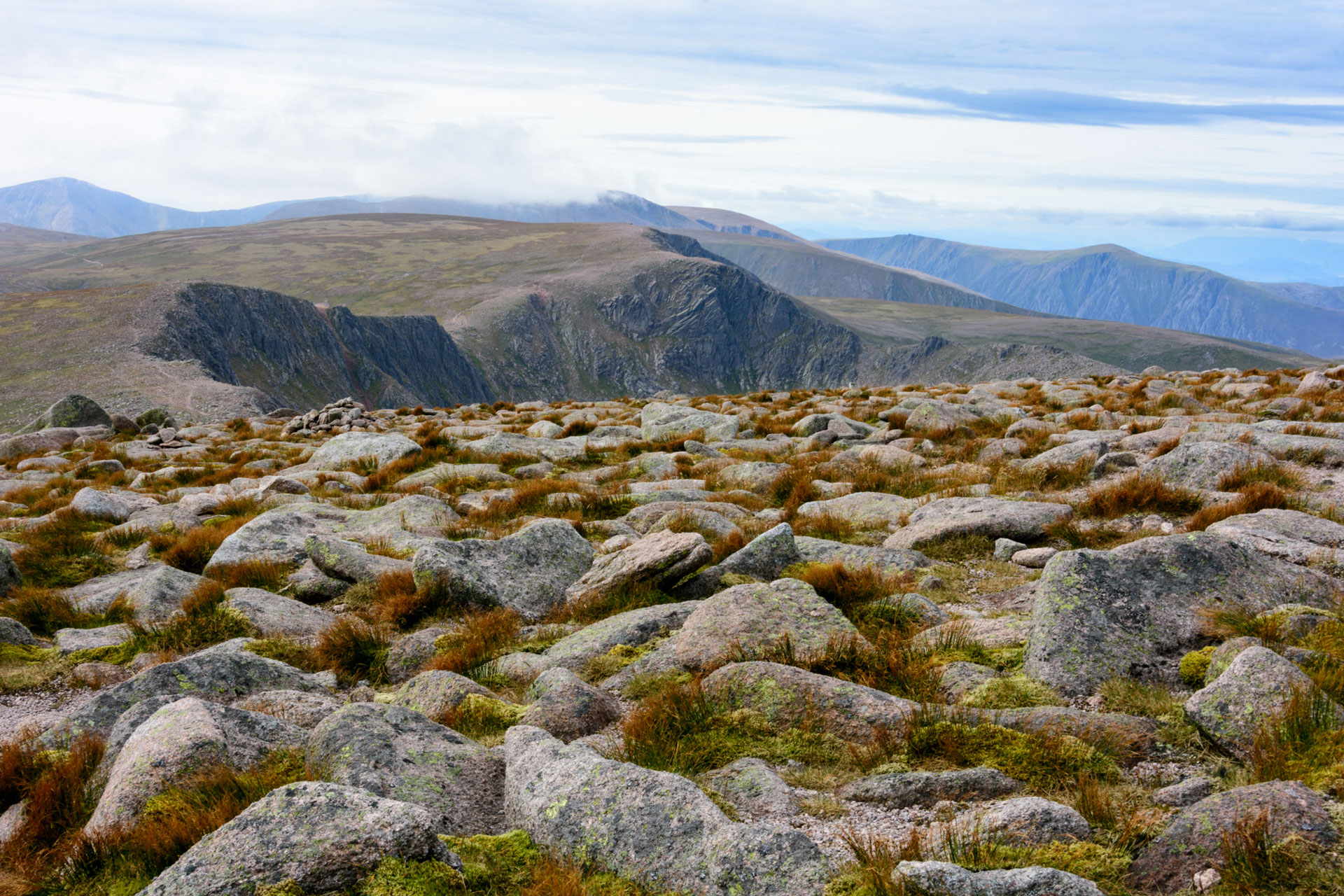The United Kingdom (UK), if you didn’t know already, is made up of England, Scotland, Wales and Northern Ireland. Out of all of these countries, Scotland is where the highest peaks can be found. Head north of Scotland’s densely populated central belt of Glasgow, Stirling, Perth and Edinburgh, and you’ll find yourself in the Scottish Highlands – home to all of the UK’s highest mountains (including Ben Nevis – the highest mountain in the UK).
With a tiny population of 5.425 million (2.711 million less than that of London) and a staggering size of 30,918 square miles (London is a measly 607 square miles), you can soon tell that the majority of Scotland is going to be pretty wild.
“Ben Macdui is said to be haunted by the ‘Grey Man of Macdui’ – Am Fear Liath Mòr”
If we were to include any of the peaks from Scotland’s neighbouring countries in this article, then we’d have to go all the way down to number 76, where you’ll find Snowdon (1,085m – Wales), number 133 for Carrauntoohil (1,039m – Republic of Ireland) and number 247 for Scafell Pike (978m – England).
All of the mountains on this list are the tallest mountains in Scotland and of course, the highest Munros too. If you’re unaware what that is, a Munro is a mountain in Scotland that’s at least 3,000ft tall, or 914m – there’s 277 of them in all.

Although Scotland is such a mountainous country, nine of the top peaks within this article are concentrated within two regions – Fort William and the Cairngorm National Park. The tenth highest peak, Ben Lawers, falls just south of the Cairngorm National Park and is therefore the highest mountain in the southern part of the Highlands.
As ever, the prominence of a mountain is a pretty contentious issue in these tallest mountain articles. This list is inclusive of peaks with a prominence of 100m and higher (just the same as in our ‘Highest Mountains in Ireland’ article). This has meant that peaks such as Carn na Criche (1.265m), Carn Derag (1,221m) and Cairn Lochain (1,216m) have all missed out.
1) Ben Nevis

Height: 1,345m
Location: Fort William
Scottish Gaelic name: Beinn Nibheis
Gaelic meaning: “Venomous mountain” or “mountain with its head in the clouds”
The highest mountain in the UK and probably the most famous mountain in the UK, for that very reason. Ben Nevis has an estimated 160,000 ascents per year. This popularity however is largely concentrated on the tourist path, with around three quarters of summiteers choosing this route to the top of the UK.
Although the tourist path is the most popular, Ben Nevis holds some of the best climbing and mountaineering routes in the country on its steep and craggy north face. If you’ve got the right experience and skill level, then you’ll be able to find a route up that’s 100 times more exciting and dramatic than that of the ‘Punter’s Path’.
Once you’re at the summit of the Ben, you may be surprised to find ruins at the top. These are the remains of an old weather observatory, which was manned from the years 1883 to 1904. Interestingly, this summit is the highest ground for over 640 km before the Norwegian mountains are reached.
2) Ben Macdui

Height: 1,309m
Location: Cairngorms
Scottish Gaelic name: Beinn Mac Duibh
Gaelic meaning: Mountain of the son of Duff/MacDuff or Hill of the Black Pig (a reference to its shape)
Before proper mapping had been invented, it wasn’t clear for quite some time as to whether Ben Nevis or Ben Macdui was the highest mountain in the UK (much of the local Aviemore community believed that ‘their’ mountain was higher than neighbouring Ben Nevis). It’s of course undisputed now though, with Macdui long since confirmed as the second highest peak in the UK and highest peak in the Cairngorm National Park.
In old Scottish folklore, Ben Macdui is said to be haunted by the ‘Grey Man of Macdui’ – Am Fear Liath Mòr. The Grey Man of Macdui is said to be of ‘extremely tall stature, covered with short hair, or as an unseen presence that causes uneasy feelings in people’.







